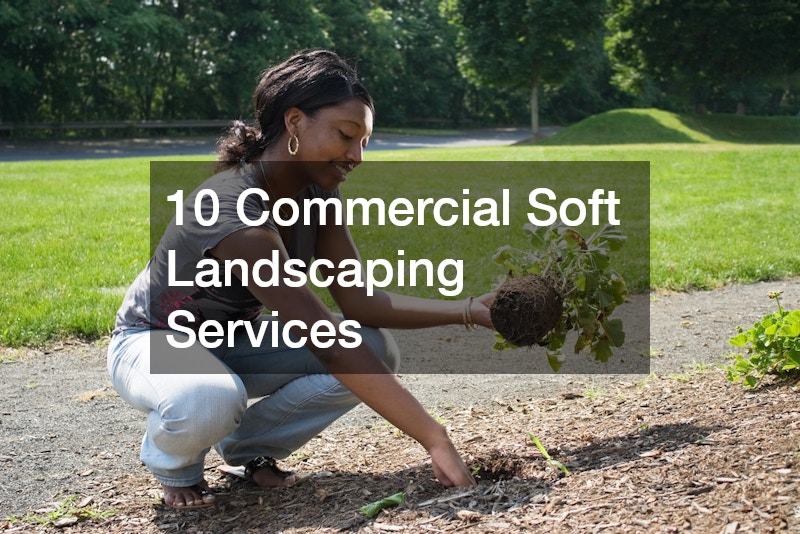A well-designed and properly maintained landscape does more than make a commercial property look appealing — it creates a welcoming atmosphere, enhances property value, and reflects a business’s professionalism. Commercial soft landscaping focuses on the living elements of outdoor spaces such as plants, grass, soil, and trees, blending beauty and functionality. While hardscaping involves the structural aspects like paths and patios, soft landscaping brings the area to life through color, texture, and natural balance.
Each component of soft landscaping plays a distinct role in shaping the outdoor environment. From vibrant garden beds and manicured lawns to seasonal flower displays and carefully pruned hedges, these services create spaces that feel both inviting and sustainable. Businesses often pair these landscaping services with other professionals — such as hardscaping businesses, local land surveyors, and even electrical services — to ensure every aspect of their property is cohesive, safe, and efficiently managed.
Below, we’ll explore the top ten commercial soft landscaping services, their benefits, and how they integrate with other industries to create functional and attractive outdoor spaces.
1. Garden Bed Design and Planting
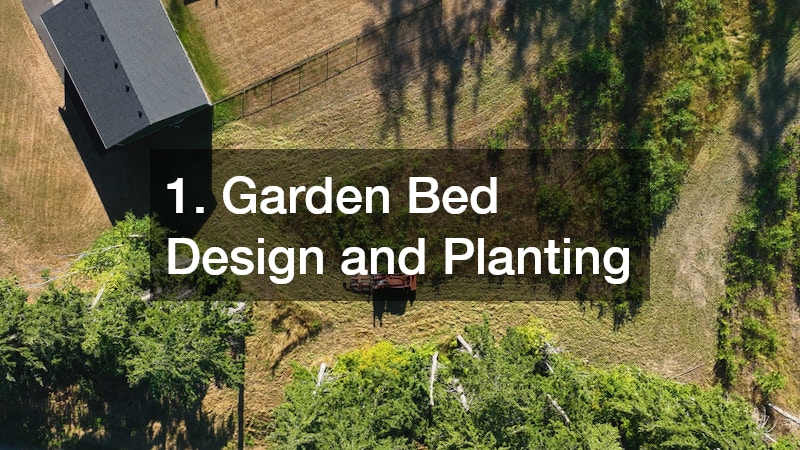
Garden bed design and planting form the foundation of a stunning landscape. Well-planned garden beds add structure, color, and character to commercial properties, drawing attention to entryways, signage, and walkways. Professional landscapers consider plant type, soil condition, sunlight, and maintenance needs to ensure the right mix of perennials, annuals, and shrubs.
Working with a hardscaping business can elevate this process. While soft landscaping focuses on the greenery, hardscaping teams create borders, retaining walls, and pathways that define and complement the plant layout. Together, they achieve a harmonious balance between natural and built environments.
Beyond aesthetics, properly designed garden beds can also improve drainage and reduce soil erosion. The selection of native or drought-resistant plants helps lower maintenance costs and promotes sustainability. With expert design and planting, commercial spaces can achieve an elegant yet functional outdoor environment that welcomes visitors year-round.
2. Turf Installation and Maintenance
A lush, green lawn enhances curb appeal and creates a welcoming first impression that reflects the professionalism and care of a business setting. It provides an open, refreshing area that softens the appearance of buildings and hard surfaces while offering a sense of calm and order. Whether used to frame walkways, highlight signage, or create outdoor rest areas for staff and visitors, a well-maintained lawn serves both functional and aesthetic purposes. It invites people in, encourages relaxation, and subtly communicates that the company values quality and attention to detail. Beyond its visual charm, a thriving lawn contributes to a cleaner environment by filtering dust, reducing noise, and improving air quality — benefits that enhance the overall appeal of any commercial property.
Turf installation, however, involves far more than simply rolling out sod. It’s a technical process that requires planning, precision, and the right environmental conditions. Before the first blade of grass takes root, landscapers must carefully prepare the soil, remove debris, and test for proper pH levels. Grading and leveling the ground are essential steps that ensure uniform growth and prevent drainage issues later on. In this stage, local land surveyors often play a crucial role. They assess the site’s slope, drainage patterns, and topography to determine how water will flow across the surface. Their expertise helps prevent common problems like water pooling, erosion, and uneven settling — issues that can severely damage turf health and appearance over time. By combining accurate surveying data with modern landscaping techniques, professionals can create a foundation that supports strong root systems and long-lasting greenery.
Once the turf is installed, consistent and attentive maintenance is key to preserving its lush appearance. Regular mowing keeps grass at the ideal height, promoting even growth and discouraging pests. Aeration improves oxygen circulation and root development, while fertilization replenishes essential nutrients needed for vibrant color and resilience. Weed control and pest management further protect the turf from invasive growth that can choke out healthy grass. Many commercial properties also integrate smart irrigation systems to automate watering schedules and reduce waste, ensuring the lawn receives just the right amount of moisture year-round.
Proper turf care does more than beautify a property — it enhances soil stability, reduces surface temperature, and provides a cooler, more comfortable environment around buildings. Well-maintained lawns absorb rainwater efficiently, helping control runoff and prevent erosion. They also contribute to sustainability by lowering ambient temperatures, reducing glare, and creating pleasant outdoor zones for employees and clients alike. When businesses combine professional turf management with expert surveying, irrigation planning, and ongoing care, the result is an attractive, durable landscape that elevates their brand image. A healthy, vibrant lawn not only boosts the visual appeal of a property but also strengthens its environmental performance, ensuring that the outdoor space remains an enduring asset to the business.
3. Tree and Shrub Planting
Trees and shrubs are essential elements in soft landscaping, providing shade, structure, and environmental benefits. They improve air quality, offer natural cooling, and create visual depth in commercial spaces. The strategic planting of trees and shrubs can also reduce energy costs by providing shade near windows or outdoor seating areas.
In collaboration with emergency tree service providers, landscapers can ensure that trees remain healthy and safe. Emergency tree professionals address issues like storm damage, fallen limbs, or diseased trees that pose safety hazards. Regular pruning and inspection prevent these risks and extend the life of the trees.
Choosing the right species is key — hardy native varieties tend to thrive with less maintenance and are more resistant to local pests. Shrubs, meanwhile, can be used for privacy screening, defining boundaries, or softening hardscape edges. When thoughtfully arranged, trees and shrubs not only beautify commercial properties but also enhance biodiversity and environmental health.
4. Mulching and Soil Conditioning
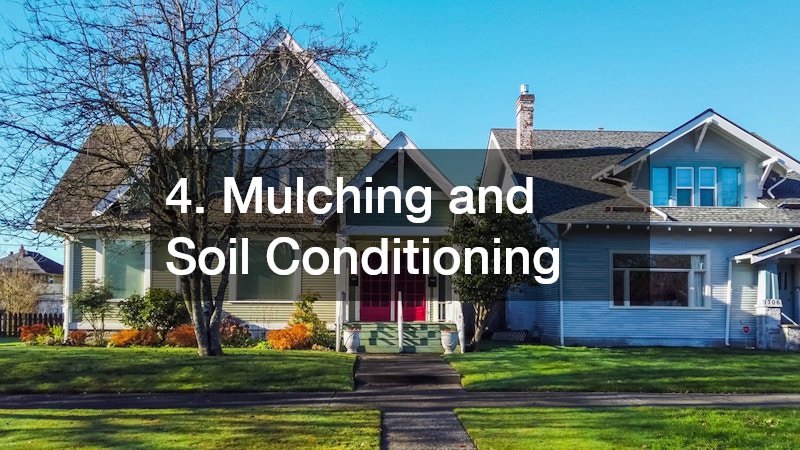
Healthy soil is the backbone of any thriving landscape. Mulching and soil conditioning services help retain moisture, regulate temperature, and enrich the soil with essential nutrients. Mulch also suppresses weeds and prevents erosion, making it both a practical and aesthetic addition to garden beds and tree bases.
Property surveyors often work alongside landscapers to ensure that the land’s structure supports optimal drainage and soil performance. Proper grading and survey data help identify areas where soil amendment or erosion control is needed before planting begins.
Mulching materials vary — from organic options like bark chips and compost to decorative stones or recycled materials. Each choice contributes differently to soil health and appearance. Routine replenishment ensures long-term effectiveness, keeping landscapes lush and balanced. When paired with professional surveying and maintenance, mulching becomes a cornerstone of sustainable landscape management.
5. Seasonal Planting and Flower Displays
Seasonal plantings and flower displays infuse outdoor spaces with changing colors and vibrancy throughout the year. Whether it’s spring blooms, summer foliage, or autumn textures, rotating displays keep commercial landscapes looking fresh and engaging. These installations can also align with company branding or holiday themes, enhancing customer experience and curb appeal.
Sustainability is often at the forefront of modern landscaping, and incorporating solar panels into commercial outdoor designs supports energy efficiency. Solar lighting powered by panels can highlight flower beds and pathways, providing eco-friendly illumination that enhances nighttime visibility and safety.
Professionally managed seasonal plantings ensure that plants thrive in their respective climates, reducing replacement costs and keeping maintenance efficient. The combination of natural beauty and smart technology demonstrates a business’s commitment to both aesthetics and environmental responsibility.
6. Irrigation System Installation and Management
An efficient irrigation system is essential for maintaining healthy lawns and gardens, particularly in commercial properties where consistency is key. Professional irrigation design ensures that every area receives adequate water without waste. Systems may include sprinklers, drip lines, or smart controllers that adjust based on weather conditions and soil moisture levels.
Partnering with electrical services providers can be crucial when setting up automated irrigation systems. These systems often rely on timers, sensors, and pumps that need proper electrical installation and safety checks. Electricians ensure that the setup complies with local codes and operates efficiently.
Regular inspections, repairs, and adjustments keep irrigation systems performing optimally year-round. By investing in modern irrigation technology and expert electrical integration, businesses can conserve water, lower utility bills, and maintain beautiful, thriving landscapes with minimal effort.
7. Weed and Pest Management
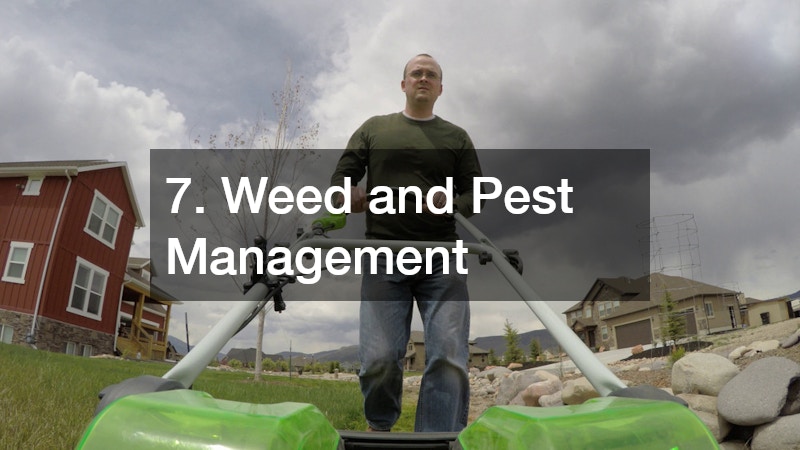
Weeds and pests are among the biggest threats to healthy landscapes. They compete for nutrients, disrupt growth, and can damage the visual appeal of gardens and lawns. Professional weed and pest management involves the use of targeted treatments and sustainable practices to keep unwanted growth and infestations under control.
In areas where natural water sources are nearby, water well drillers may be involved to ensure that irrigation water is safe and sustainable. Using well water can reduce dependence on municipal supplies, making pest and weed treatments more cost-effective and environmentally conscious.
Modern landscaping companies often prioritize eco-friendly solutions, using organic or integrated pest management (IPM) techniques to minimize environmental impact. Consistent monitoring, early detection, and preventive care protect both plant health and the overall look of commercial spaces.
8. Hedging and Pruning Services
Hedges, shrubs, and trees require regular pruning to maintain shape, health, and safety. Hedging creates defined boundaries, privacy screens, and structured designs that complement the property’s architecture. Pruning, on the other hand, removes dead or overgrown branches to promote healthy growth and prevent hazards.
Safety is especially important in commercial settings, where overgrown trees or hedges can interfere with signage, lighting, or pedestrian areas. Partnering with asbestos removal professionals during renovation or demolition projects ensures that all environmental hazards are managed safely before landscaping work begins. This coordination maintains compliance with safety standards while protecting workers and the public.
Skilled pruning enhances air circulation and sunlight exposure for plants, ensuring they thrive. Well-maintained hedges and trees not only elevate visual appeal but also demonstrate a business’s commitment to safety, cleanliness, and attention to detail.
9. Erosion Control and Ground Cover Solutions
Erosion control is vital for maintaining landscape stability, particularly on sloped or high-traffic commercial sites. Ground cover plants, retaining structures, and proper drainage systems all play a part in preventing soil loss and water runoff. Landscapers often combine vegetation with engineered solutions to create a resilient, long-term fix.
Aggregate products such as gravel, crushed stone, and sand are frequently used in erosion control. These materials support soil stability, enhance drainage, and provide attractive ground cover options for walkways and garden borders. When paired with vegetation, aggregates help reduce water flow speed, allowing for natural absorption and filtration.
Effective erosion control not only preserves the landscape’s integrity but also prevents costly repairs and environmental damage. By blending organic and structural techniques, landscaping professionals protect both aesthetics and functionality, ensuring commercial properties remain safe and sustainable.
10. Landscape Renovation and Plant Replacement
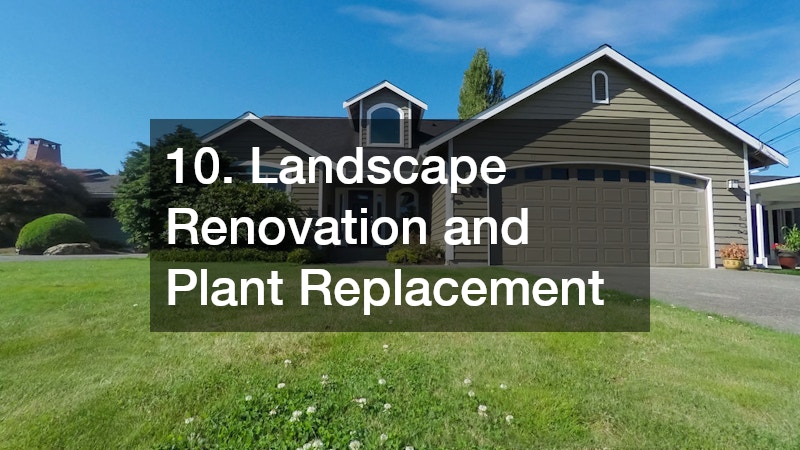
Over time, commercial landscapes may lose their vibrancy due to weather, aging plants, or evolving design preferences. Landscape renovation and plant replacement breathe new life into these spaces, restoring beauty and functionality. This process may involve redesigning layouts, replacing outdated plants, refreshing soil, and integrating new sustainable features.
In colder regions, these services often go hand-in-hand with snow removal operations. After harsh winters, many landscapes require repair due to salt damage, soil compaction, and dead vegetation. By coordinating renovation efforts with snow removal teams, businesses can ensure that their outdoor spaces recover quickly and look their best when spring arrives.
Modern renovations may also include upgrades to irrigation systems, lighting, and eco-friendly installations like native plant gardens or rainwater harvesting features. Regular updates keep properties looking modern and professional, while plant replacement maintains the health and balance of the ecosystem.
Commercial soft landscaping is both an art and a science. It brings together horticultural expertise, environmental awareness, and practical planning to create outdoor spaces that are visually appealing, functional, and sustainable. From the thoughtful design of garden beds to the precision of irrigation systems, every element contributes to the overall harmony of the property.
Collaborating with professionals across industries — including hardscaping businesses, local land surveyors, electrical services, property surveyors, and others — ensures that each project is comprehensive and long-lasting. These partnerships result in landscapes that not only look beautiful but also perform efficiently and support environmental goals.
Ultimately, investing in commercial soft landscaping is an investment in your brand image and the experience of everyone who visits your property. A well-maintained landscape communicates care, professionalism, and pride — qualities that every successful business strives to embody. Whether it’s through lush lawns, vibrant flower displays, or eco-friendly irrigation systems, soft landscaping transforms commercial properties into thriving, welcoming spaces that stand the test of time.
